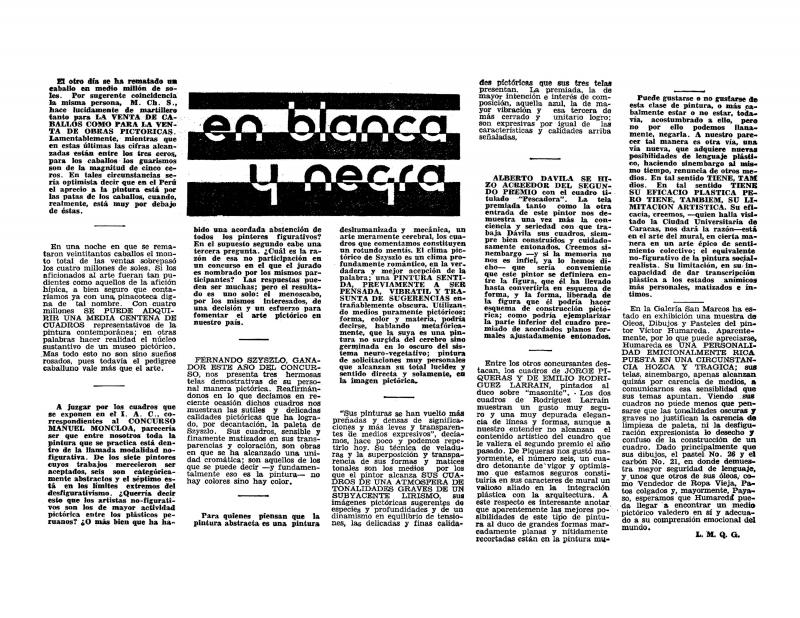During the 1950s, under pioneering abstract artists Juan Barreto (1913-91), Juan Manuel de la Colina (n. 1917), Antonino Espinosa Saldaña (1893-1969) and Enrique Kleiser (1905-77), Peru abandoned the narrow framework of experimentation (both solitary and private) characterized by the limited formulations of non-figurative painting that had prevailed at the end of the 1940s. Although the latter [artist’s] show, held in 1950, was the first featuring this trend in the country, it fell to a new generation of artists to wage the definitive battle for abstract art. Thus, the triumph of painter Fernando de Szyszlo (n. 1925) —who won the III Salón Moncloa, held in Lima on October 1955— indicated the value obtained by abstract painting at the end of two years of sharp debate on its relevance for the country [regarding the III Salón Moncloa, see in the ICAA digital archive, “En blanca y negra,” by Luis Miró Quesada Garland (doc. no. 859754)]. Despite the negative reviews generally garnered by the show, [see those by Sebastián Salazar Bondy (1924–64) [“Visita al Salón de Arte Abstracto,” (doc. no. 1137318)] and painter Carlos Aitor Castillo (1913-2000) [“Primer Salón de Arte Abstracto,” (doc. no. 1137342)]], the Salón foretold the importance that non-figurative language would play in the following decade, even though itwould continue to have opponents such as Castillo (see in the ICAA digital archive“Crónica de arte: I Salón de Arte Abstracto,” by Moll (doc. no. 1137359)].




